Early career
Hartmann attended primary school at the International English and International German schools in Cairo. After completing his primary educational studies, he was then sent to Germany to complete his higher education. In 1939 Hartmann obtained his baccalaureat award and had decided to become an artist. Bowing to pressure from his father, he agreed instead to study architecture in Berlin. Hartmann's architecture studies were pre-empted by the outbreak of World War II in Europe, so, finding himself in Geneva at the end of the war, he studied sculpture with Henri Paquet.
In 1946, Hartmann returned to Cairo where he set up his first studio in his parents' garage. He subsequently moved around Europe, spending time sculpting and studying in Florence, Positano and Paris. He finally settled in Geneva in 1950, where he did the bulk of his work.
Later career
Hartmann worked in Geneva from 1950 until the end of his career in the late 1990s.
In 1957 he received his first commission for a large work - the Virgin for L'Église du Christ-Roi in Petit Lancy.
In 1959 he had his first solo exhibition, which was followed by many solo and collective shows in Geneva, and throughout the French part of Switzerland.
In 1968 he received his most important commission which was the statue of Charles Pictet de Rochemont, now installed on the Promenade de la Treille in Geneva.
Hartmann supplemented his sculpting income as a restorer at the Musée d'Art et d'Histoire.
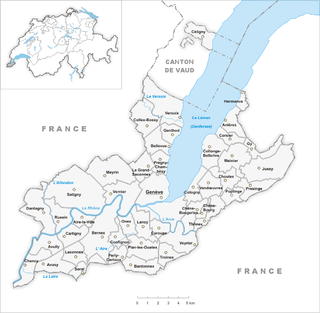
The Canton of Geneva, officially the Republic and Canton of Geneva, is one of the 26 cantons of the Swiss Confederation. It is composed of forty-five municipalities, and the seat of the government and parliament is in the City of Geneva.

Sibylle Blanc is a French-speaking Swiss actress, writer and director who is actively involved in theatrical, film, television and radio productions in her native Switzerland as well as in nearby France.

CEVA (Cornavin‒Eaux-Vives‒Annemasse) is an orbital rail line designed to connect the main railway station of Geneva, Switzerland on the north of Lake Geneva with the Gare d'Annemasse in Annemasse, France, to the south of Lake Geneva. The link allows through running between the main Swiss rail network and the until then isolated line east of Annemasse in Haute-Savoie, which was served until 2013 by French SNCF services. A new station was constructed on the route at Gare des Eaux-Vives and the line between this station and the border was replaced with a double track line in tunnel. Track already existed as far as Stade de Genève station; the full route opened on 15 December 2019 to Léman Express and RegioExpress services.
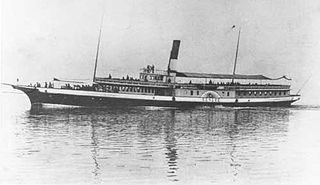
MS Genève is the oldest paddle ship of Lake Geneva. Originally a steamship, she became diesel powered in the 1930s.
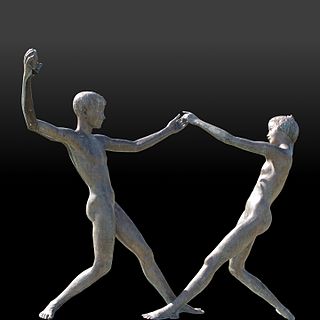
Milo Martin was a Swiss sculptor and medal-artist.
Edouard-Marcel Sandoz was a Swiss animalier sculptor and painter.

Frédéric Alfred Marzolff (1867-1936) was a French sculptor and medallist, known especially for his monumental figures.
Charles Baudouin was a French psychoanalyst and pacifist. His psychoanalytical work combined Freudianism with elements of the thought of Carl Jung and Alfred Adler.
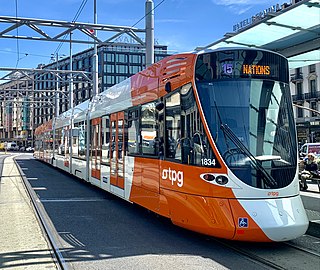
The Geneva tramway network is a network of tramways forming the core element of the public transport system in Geneva, Switzerland. It is operated by Transports Publics Genevois (TPG), and is supplemented by the Geneva trolleybus system and the Geneva bus system.
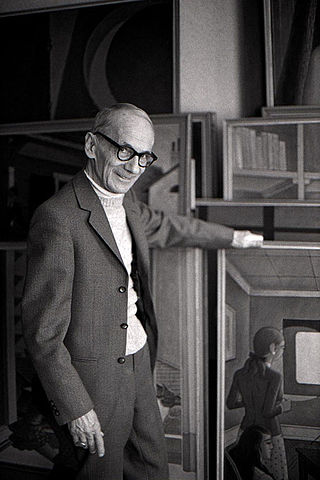
Émile François Chambon was a Swiss painter and illustrator.
Jules Favre was a Swiss zoologist, mycologist and geologist. He was curator at the Natural History Museum of Geneva from 1915 to 1952.

Simon Berger, born in 1976, is a Swiss contemporary visual artist. He is best known for pioneering the art made by breaking glass with a hammer. His work has been widely exhibited around the world.
Frédéric Schmied was a sculptor. He attended the Ecole des Beaux-Arts in Geneva (1916–1921). Schmied's work was exhibited at the Musée Rath in October 1931. His work was also part of the sculpture event in the art competition at the 1924 Summer Olympics.

Jean-Élie Chaponnière, also known as John-Étienne Chaponnière and Jean-Étienne Chaponnière, was a Swiss sculptor active in Italy and France.
Johan Nikles is a Swiss tennis player.
Muqbil Al-Zahawi is an Iraqi ceramicist. His creative and powerful sculptures and reliefs have been exhibited in museums, galleries, international shows, studios, and private residences throughout the U.S., Western Europe, and the Middle East. Al-Zahawi's works derive inspiration from African Art, select Western artists, and his background as an Iraqi Muslim.

Morice Lipsi was a French sculptor of the School of Paris of Polish, Jewish descent. During the period following the Second World War he was one of the most important sculptors of monumental abstract stone sculptures.
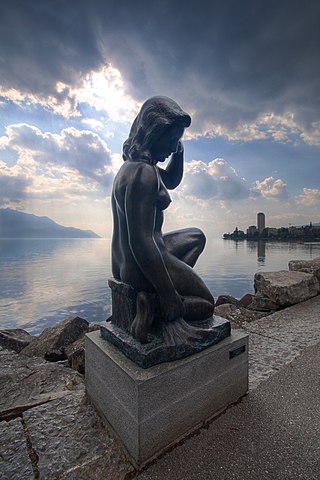
Arthur Schlageter was a Swiss sculptor and painter.
The Geneva International Championships or Championnats Internationaux de Genève or simply Geneva Championships was a men's and women's open international clay court tennis tournament founded in 1908 and first staged at the Tennis Club of Geneva Eaux-Vives, Parc des Eaux Vives, Geneva, Switzerland. The tournament was also known as the Coupe Certina for sponsorship reason in the early 1970s and was discontinued in 1976.
Manuel "Manolo" Torres was a Spanish sculptor.
This page is based on this
Wikipedia article Text is available under the
CC BY-SA 4.0 license; additional terms may apply.
Images, videos and audio are available under their respective licenses.











